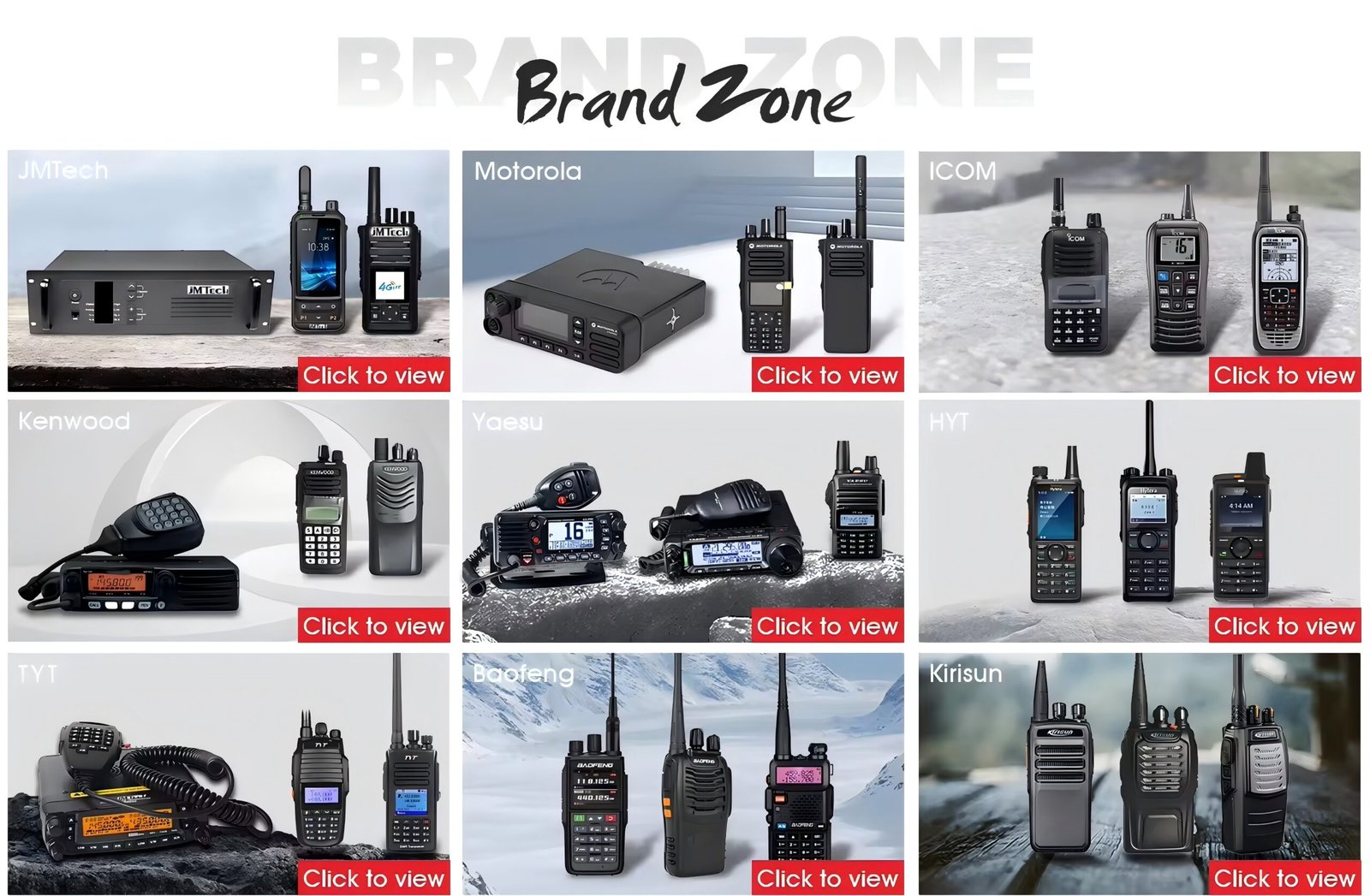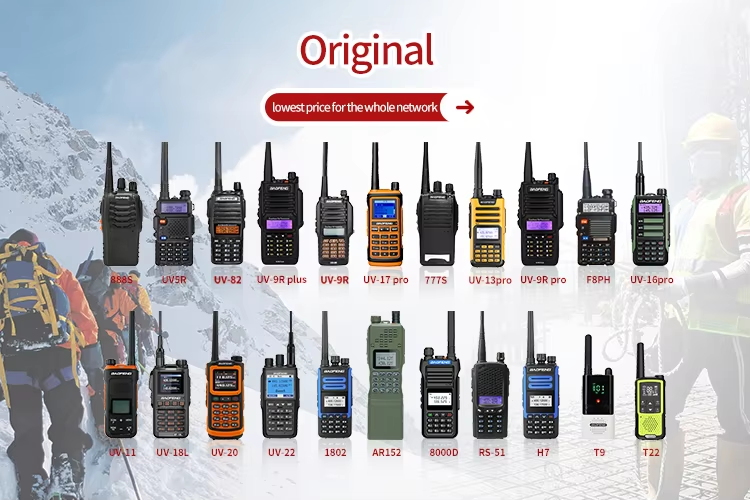Yes, the transmission distance of a walkie-talkie can be extended through various methods, depending on the device type, environment, and technical adjustments. Here are the most effective ways:
1. Using Repeaters
A repeater is a device that receives weak radio signals from walkie-talkies, amplifies them, and retransmits them at a higher power. It is typically installed at elevated locations (e.g., rooftops, towers, mountains) to overcome obstacles like buildings or terrain.
- How it works: Repeaters operate on two frequencies—one for receiving signals (“input frequency”) and another for retransmitting them (“output frequency”). Walkie-talkies must be programmed to match these frequencies to use the repeater.
- Effect: Can extend communication range from a few kilometers to tens of kilometers, making it ideal for large areas like cities, industrial parks, or rural regions.
2. Upgrading Antennas
The antenna is critical for signal transmission and reception. Replacing the stock antenna with a higher-performance one can significantly boost range:
- Longer, directional antennas: These focus radio waves in a specific direction, increasing signal strength over longer distances (useful for point-to-point communication, e.g., between two fixed locations).
- High-gain antennas: Designed to capture and transmit more radio energy than standard antennas, improving range in both urban and open environments. They are often used with handheld or vehicle-mounted walkie-talkies.
3. Increasing Transmission Power
Higher transmission power allows signals to travel farther, as stronger signals are less likely to be weakened by obstacles or interference.
- Note: Most consumer walkie-talkies have fixed power (e.g., 0.5–5W) due to regulatory limits (to prevent signal congestion). Professional models may offer adjustable power settings (up to 25W for vehicle-mounted units), but increasing power also drains batteries faster.
- Regulations: Always check local laws—exceeding legal power limits can cause interference with other radio users (e.g., emergency services) and may result in fines.
4. Optimizing Environmental Factors
Environmental obstacles (buildings, trees, hills) and electromagnetic interference (from power lines, machinery) are major range limiters. Mitigating these can extend range:
- Elevating devices: Using walkie-talkies at higher positions (e.g., standing on a hill, upper floors of a building) reduces obstructions, allowing signals to travel unimpeded.
- Avoiding interference sources: Keeping walkie-talkies away from electronics (e.g., generators, Wi-Fi routers) or metal structures (which block radio waves) minimizes signal disruption.
5. Switching to Digital or IP-Based Systems
- Digital walkie-talkies: Compared to analog models, digital devices use error-correction technology, which preserves signal clarity even when weak. This allows them to maintain communication over longer distances where analog signals would become unintelligible.
- IP walkie-talkies: These use internet networks (Wi-Fi, cellular data) instead of radio waves. As long as there is network coverage, they can communicate globally, effectively eliminating range limits (similar to smartphone apps but with push-to-talk functionality).
6. Using High-Power Batteries
Weak batteries reduce transmission power, limiting range. Using high-capacity, high-voltage batteries (e.g., lithium-ion batteries with higher mAh ratings) ensures the walkie-talkie operates at full power for longer, maintaining optimal signal strength.
Key Considerations
- Regulatory compliance: Frequency bands, power limits, and repeater usage are regulated by authorities (e.g., FCC in the U.S., Ofcom in the UK). Unauthorized modifications (e.g., increasing power beyond limits) are illegal.
- Cost vs. benefit: Repeaters and high-gain antennas are effective but add expense. For casual users, simpler solutions like upgrading antennas or using higher-power batteries may suffice.
In summary, extending a walkie-talkie’s range is feasible through technical upgrades, infrastructure (repeaters), and environmental adjustments, depending on the user’s needs and budget.
How much does a walkie-talkie repeater cost?
Are there any legal restrictions on using walkie-talkie repeaters?
What is the difference between digital and analog walkie-talkies in terms of signal range?


